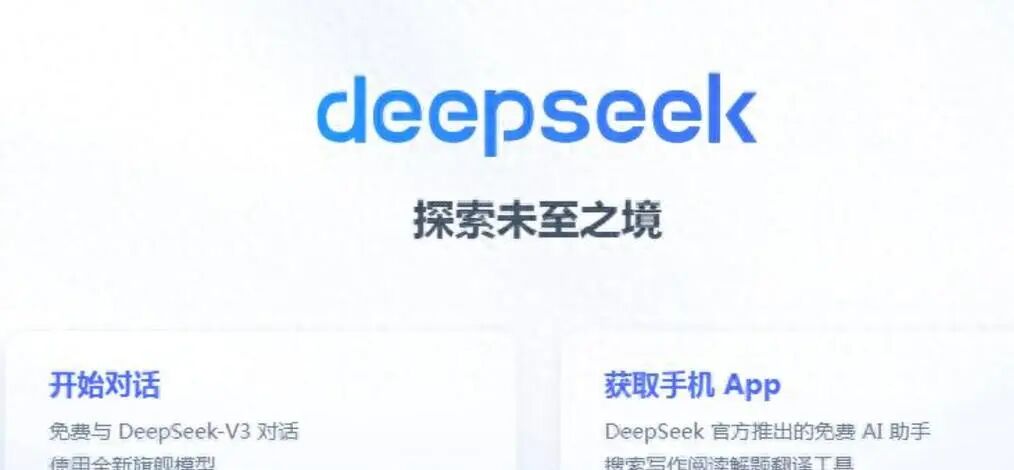
Click the blue text to follow us
Hello everyone, this is Sister Fang!
Today we will discuss an interesting and practical topic: The combination of PLC (Programmable Logic Controller) and Artificial Intelligence (AI).
The main focus this time is the interaction between PLC and DeepSeek in smart lighting systems.
Through this article, you will learn how to utilize PLC and AI technology to achieve intelligent lighting control and understand the immense potential of their combination.
If you are a PLC programming enthusiast or interested in industrial automation and artificial intelligence, then today’s content will surely be rewarding! Next, Sister Fang will guide you step by step to understand the logic and implementation behind this technology.

1. Why combine PLC with DeepSeek?

In the traditional field of industrial automation, PLC has always been a core device responsible for executing logical control tasks, such as switch control and timing operations.
With the development of modern technology, users’ demands for intelligence are increasing.
In smart lighting systems, users expect the lighting to dynamically change based on ambient light, time periods, and human activity, rather than just simple switch logic.
At this point, relying solely on PLC may seem a bit “stiff”.
Thus, AI technology (like DeepSeek) comes into play!
DeepSeek can capture and analyze a large amount of dynamic information, deriving the best lighting control parameters through deep learning algorithms, and then transmitting this data to the PLC for execution.
In this way, the entire system achieves intelligence, being both efficient and flexible.
To summarize: PLC is responsible for execution, while AI is responsible for thinking!

2. Hardware Configuration: The Basic Equipment for Achieving Smart Lighting

Sister Fang has compiled a list of hardware required to implement a smart lighting system, which is simple and easy to understand, allowing you to get started quickly:
Component| Function—|—PLC Controller| Executes the logical control of lighting, such as switching, dimming, etc.AI Module (DeepSeek)| Used for data analysis and intelligent logic generation, such as detecting human activity, analyzing ambient light, etc.Light Sensor| Detects ambient light intensity and provides real-time data.Human Infrared Sensor| Used to detect whether there is human activity in the room.Dimming Driver| Adjusts the brightness of the lights according to the instructions from AI and PLC.Communication Module (e.g., Modbus)| Enables data transmission between PLC and DeepSeek.
These devices work together like a team, each responsible for different tasks, collectively completing the control of smart lighting.

3. Design Concept: Making the System Smarter with a “Brain” and “Executor”

To enable efficient collaboration between PLC and DeepSeek, we need to clarify their respective roles:
- DeepSeek – The Brain of the System: DeepSeek collects data through sensors (such as ambient light, human activity, time periods, etc.), analyzes it using its powerful AI algorithms, and generates optimal lighting control strategies.
Based on weather conditions, it determines whether to increase indoor lighting brightness.
- PLC – The Executor of the System: The control strategies derived from DeepSeek are transmitted to the PLC via the communication module, and the PLC executes specific actions based on these instructions, such as adjusting light brightness or turning lights on or off.
Control Flow Diagram:
- Sensors collect data (ambient light, human flow).
- Data is transmitted to DeepSeek for analysis.
- DeepSeek generates lighting control instructions.
- Instructions are sent to the PLC via the communication module.
- PLC executes control instructions (such as dimming, switching lights on/off).
Isn’t it simple? It’s like a “conductor” (DeepSeek) and “band members” (PLC and other hardware) working in perfect harmony!

4. Implementation Details: Understanding the Core Logic of the System Step by Step

Next, Sister Fang will explain the key implementation details of this system in simple terms:
1. Data Collection and Transmission
- The light sensor detects ambient light intensity in real-time and transmits the data to DeepSeek.
- The human sensor detects whether there is human activity in the room; if there is no one, DeepSeek will issue a “turn off the lights” command; if someone is present, it will determine the brightness of the lights based on ambient light.
2. Intelligent Analysis by DeepSeek
The AI module of DeepSeek analyzes data based on the following factors:
- Time Period: For example, brighter lights are needed at night, while during the day, they can be dimmed appropriately.
- Ambient Light: If there is sufficient sunlight outdoors, the indoor light brightness can be reduced.
- Human Activity: If no human activity is detected for a long time, DeepSeek will issue a “turn off the lights” command.
3. Logical Control by PLC
Upon receiving instructions from DeepSeek, the PLC executes the corresponding control logic:
- Dimming: If the DeepSeek instruction is “set light brightness to 50%”, the PLC will adjust the light output through the dimming driver.
- Switching Lights: If the DeepSeek instruction is “turn off the lights”, the PLC will directly cut off the power to the lights.

5. Debugging Methods: Ensuring Stable System Operation

Debugging is an important step in implementing a smart lighting system. Sister Fang has summarized the following debugging steps:
-
Test Hardware Modules Individually: Before system integration, test whether the light sensor, human sensor, dimming driver, and other devices are functioning properly.
-
Check the Communication Module: Ensure smooth communication between PLC and DeepSeek, such as checking for delays or packet loss in data transmission via Modbus protocol.

-
Verify Logic: Simulate different scenarios (such as day, night, human activity, etc.) and observe whether the lights can adjust according to DeepSeek’s analysis results.
-
Optimize Parameters: Adjust the AI algorithm parameters of DeepSeek and the timing control logic of PLC based on actual usage to make the system more aligned with user needs.

6. Application Scenarios: Making Life and Work More Convenient

Smart lighting systems are not only suitable for homes but can also shine in the following scenarios:
- Offices: Automatically adjust light brightness based on day and night time periods to save energy.
- Hotels: Turn off lights in unoccupied rooms to enhance energy management.
- Factories: Adjust lighting in real-time based on the working status of the production line to improve the working environment for employees.
By combining PLC and DeepSeek, smart lighting systems can not only reduce energy consumption but also enhance user experience, making life more comfortable and convenient.

7. Common Problems and Solutions

-
Problem: Lighting adjustment is not sensitive enough? Solution: Check if the sampling frequency of the light sensor is too low, and increase the sampling frequency if necessary.
-
Problem: Dimming is unstable? Solution: Adjust the response time between PLC and the dimming driver to avoid signal delays.
-
Problem: Communication interruption? Solution: Check if the connection of the communication module is stable, and replace the communication cable or reconfigure the communication protocol if necessary.

8. Conclusion: Letting PLC and AI Spark

Through today’s article, Sister Fang hopes everyone has gained a deeper understanding of the application of PLC and DeepSeek in smart lighting systems.
PLC serves as the executor, while AI acts as the “brain”; the two complement each other, breathing new life into traditional industrial automation.
If you are interested, you can try to build a simple smart lighting system, starting from controlling the lights in one room and gradually expanding to larger scenarios. Learning the application of PLC and AI not only enhances your technical skills but also lays a solid foundation for your future career development!
Get hands-on practice! If you have any questions, feel free to leave a comment, Sister Fang is waiting for you! 😊## 9. Function Expansion: Taking Smart Lighting Further
The core functions of the smart lighting system have been realized, but with a little expansion, it can become even smarter and more multifunctional. Sister Fang will introduce several functional expansions that you can try to further enhance the practicality and technical content of the system:
1. Adding Voice Control Functionality
By using a voice recognition module (such as NLP technology combined with DeepSeek), users can directly issue voice commands to control the lights, such as:
- “Dim the lights”
- “Turn on the living room light”
- “Set the lights to warm light mode”
This voice interaction is particularly suitable for home scenarios, being both convenient and cool. The voice commands can be parsed by DeepSeek, which then transmits specific control commands to the PLC for execution.
2. Environment Mode Switching
Create multiple scene environment modes, such as “Reading Mode”, “Cinema Mode”, “Sleep Mode”, etc. Each mode has different light brightness and color temperature. For example:
- Reading Mode: Provides high-brightness cool light to protect eyesight.
- Cinema Mode: Dims the lights to create a warm viewing atmosphere.
- Sleep Mode: Soft warm light helps one quickly enter a relaxed state.
Parameters for different modes can be set in DeepSeek, allowing users to quickly switch via a mobile app or voice commands.
3. Data-Driven Energy Saving Analysis
Smart lighting is not just a control method; it can also optimize energy savings through data analysis. For example:
- Record daily electricity consumption data and generate energy-saving reports.
- Analyze users’ lighting usage habits through DeepSeek to optimize control logic and reduce unnecessary energy consumption.
This can help households reduce electricity bills and provide enterprises with higher energy management efficiency.
4. Integration with Other Smart Devices

Combine smart lighting with other smart devices (such as air conditioning, curtains, door locks, etc.) to create a fully smart home. For example:
- When users activate “Away Mode”, the lights turn off, curtains close, and the door locks automatically.
- In “Home Mode”, the lights turn on automatically, and the air conditioning adjusts to a comfortable temperature.
This full-home smart integration can be achieved through DeepSeek’s powerful computing capabilities, allowing users to enjoy a more convenient living experience.

10. Troubleshooting: Handling Issues with Ease

In practical applications, you may encounter some issues. Sister Fang has summarized several common faults and their solutions to help you cope easily:
1. Lighting System Response is Slow
- Reason: Communication delay between DeepSeek and PLC or low signal processing efficiency.
- Solution: Ensure the communication module (such as Modbus) is configured correctly and check the stability of the network connection.
If the problem persists, you can optimize DeepSeek’s calculation logic to reduce unnecessary computations.
2. Abnormal Control Instructions
- Reason: Abnormal sensor data or incorrect analysis results from DeepSeek.
- Solution: Check if the sensors are aging or interfered with, and update DeepSeek’s algorithm parameters to ensure accurate analysis logic.
3. Unstable PLC Program Operation
- Reason: There may be logical errors in the PLC program or loose hardware connections.
- Solution: Carefully check the PLC program to ensure all logic meets design requirements. Also, confirm that hardware connections are secure.
4. Power Outage Causes System Restart Failure
- Reason: No power outage protection mechanism is set.
- Solution: Incorporate power outage protection logic into the system design, such as using the PLC’s non-volatile memory to save key parameters, ensuring the system can remember the last state when it resumes operation.

11. Future Development Directions: The Infinite Potential of Smart Lighting

With the development of technology, the combination of PLC and AI (such as DeepSeek) will have a more profound impact on the smart lighting field. Here are several promising directions:
1. Higher AI Involvement
In the future, AI can participate more deeply in the system, even completely replacing traditional PLC logical control. By directly controlling the dimming driver, the system architecture can be further simplified.
2. Stronger Multimodal Interaction
DeepSeek can support more types of inputs, such as integrating image recognition technology to analyze human flow dynamics in camera footage, allowing for more precise lighting control.
3. Deeper Energy Saving Optimization
By combining AI with the Internet of Things, smart lighting systems can obtain real-time grid load data, intelligently adjust lighting power consumption, and respond to the energy-saving needs of smart cities.
4. Broader Industry Applications
In addition to homes and offices, smart lighting can be applied in more scenarios:
- In agriculture, adjust light intensity and frequency based on plant growth cycles.
- In cultural venues, design dynamic lighting effects based on exhibition content to provide an immersive experience for visitors.

12. Conclusion: From Entry-Level to the Future, Moving Towards an Era of Intelligence

In today’s article, Sister Fang has guided everyone on how to combine PLC with DeepSeek for the design and implementation of smart lighting systems.
We have dissected the core logic of smart lighting from hardware configuration, design concepts to functional expansions and debugging optimizations.
Through this article, I believe you not only have a new understanding of the combination of PLC and AI but also gain some practical application inspiration.
What have you learned?
- Understanding the division of labor and collaboration between PLC and DeepSeek.
- Mastering the basic implementation logic of smart lighting systems.
- Discovering how to expand functions to make the system smarter and more efficient.
Sister Fang encourages everyone to get hands-on practice! Whether you are a beginner in PLC or an automation enthusiast, only through practical operation can you truly grasp the essence of these technologies. If you have any questions or want to share your learning experiences, feel free to leave a comment, and Sister Fang will reply to you as soon as possible!
Remember: The charm of technology lies in infinite possibilities, and smart lighting is just the beginning. Let us step into the new era of industrial automation and artificial intelligence together! 😊

Click it, share, like, and see more here